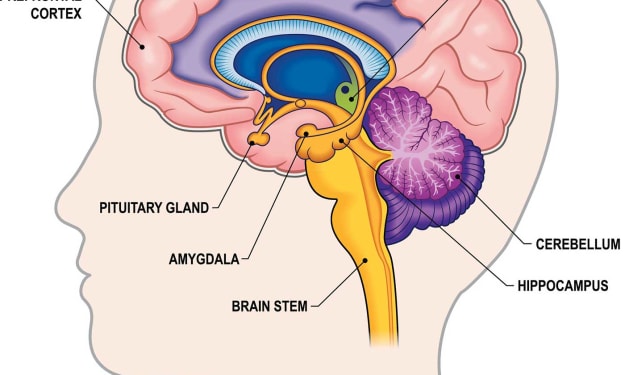TEACHING METHODOLOGY
METHOD AND PLAN
There are numerous teaching methods available, and the choice of method depends on various factors such as the subject matter, the learning objectives, the students' needs, and the teacher's preferences. Here are a few commonly used teaching methods:
Lecture: This method involves the teacher presenting information to the students through a structured and formal presentation. It is useful for introducing new concepts, providing explanations, and delivering content-rich information. Lectures can be enhanced with visual aids, multimedia resources, and engaging storytelling techniques to maintain student interest.
Discussion: Discussion-based teaching involves active student participation and encourages critical thinking, analysis, and communication skills. The teacher facilitates a guided discussion where students share their thoughts, opinions, and ideas. This method promotes deeper understanding, encourages peer learning, and helps develop students' argumentation and reasoning skills.
Cooperative Learning: Cooperative learning methods involve organizing students into small groups to work together on a shared task or project. This method fosters collaboration, communication, and teamwork skills. Students can work collectively to solve problems, complete projects, or engage in discussions. The teacher acts as a facilitator, providing guidance and support as needed.
Inquiry-Based Learning: Inquiry-based learning focuses on students actively exploring a topic through questioning, investigating, and discovering answers on their own. It promotes critical thinking, problem-solving, and independent learning skills. The teacher provides guidance, poses thought-provoking questions, and facilitates the students' inquiry process.
Problem-Based Learning: Problem-based learning involves presenting students with real-world problems or scenarios that require them to apply their knowledge and skills to find solutions. It encourages critical thinking, collaboration, and problem-solving abilities. The teacher acts as a facilitator, providing support, resources, and feedback throughout the problem-solving process.
Hands-On Activities: This method emphasizes experiential learning and involves students actively engaging in practical activities, experiments, or demonstrations. It can be particularly effective in subjects such as science, art, or physical education. Hands-on activities promote active participation, inquiry, and the application of knowledge.
Technology-Enhanced Learning: With the advancements in technology, teachers can incorporate various digital tools and resources to enhance learning. This can include interactive presentations, online research, multimedia materials, educational apps, and virtual simulations. Integrating technology can make lessons more engaging, interactive, and personalized.
It's important to note that the choice of teaching method should align with the specific learning objectives, the subject matter, and the needs of the students. A combination of different teaching methods can be used to cater to diverse learning styles and create an inclusive and dynamic classroom environment. Flexibility, adaptability, and student-centered approaches are key to effective teaching.
disparities, and social inequalities. The legacies of colonialism have shaped power dynamics, socioeconomic structures, and cultural landscapes that persist in many parts of the world.
It is important to acknowledge and address these demerits of colonialism to promote justice, equality, and the healing of historical wounds. Recognizing and understanding the negative impacts of colonialism helps in fostering decolonization, promoting inclusive societies, and working towards a more equitable global order.
LESSON PLAN AND ITS EXAMPLE
Certainly! Here's an example of a lesson plan for a high school history class on the topic of "The Causes of World War I":
Grade Level: High School (9th-12th grade)
Subject: History
Objective:
Students will be able to identify and analyze the main causes of World War I by examining primary and secondary sources and engage in a class discussion on the topic.
Materials:
Textbooks or online resources on World War I
Primary and secondary sources related to the causes of World War I (e.g., political cartoons, speeches, newspaper articles)
Whiteboard or chalkboard
Markers or chalk
Chart paper and markers
Handouts with guiding questions (optional)
Procedure:
Introduction (5 minutes):
Greet the students and briefly explain the topic of the lesson: the causes of World War I.
Ask the students if they have any prior knowledge or familiarity with the topic.
Share the lesson objective and explain what students will be doing during the class.
Background Knowledge (10 minutes):
Engage the students in a brief discussion about the historical context of the early 20th century, including the system of alliances, nationalism, imperialism, and militarism.
Use the whiteboard or chalkboard to create a visual representation of the main causes of World War I, including the alliances and other factors.
Primary and Secondary Source Analysis (20 minutes):
Divide the students into small groups (3-4 students per group).
Distribute copies of primary and secondary sources related to the causes of World War I to each group.
Instruct the groups to read and analyze the sources, paying attention to the different causes they represent.
Provide guiding questions to help students analyze the sources (e.g., What does the source reveal about the causes of World War I? How does it reflect the political or social climate of the time?).
Group Discussion and Analysis (15 minutes):
Bring the class back together and facilitate a group discussion on the causes of World War I based on the sources they analyzed.
Ask each group to share their findings and insights with the rest of the class.
Encourage critical thinking, respectful debate, and active participation among the students.
Summarize the main causes discussed on the whiteboard or chart paper.
Closure (5 minutes):
Summarize the key points discussed during the lesson.
Reinforce the main causes of World War I and their significance.
Allow students to ask any remaining questions or share additional thoughts.
Homework (optional):
Assign a writing task, such as an essay or reflection, where students further analyze and explain the causes of World War I using the sources and knowledge gained during the lesson.
Note: The duration of each section of the lesson plan can be adjusted based on the available class time and the pace of the students.
About the Creator
Enjoyed the story? Support the Creator.
Subscribe for free to receive all their stories in your feed. You could also pledge your support or give them a one-off tip, letting them know you appreciate their work.







Comments
There are no comments for this story
Be the first to respond and start the conversation.